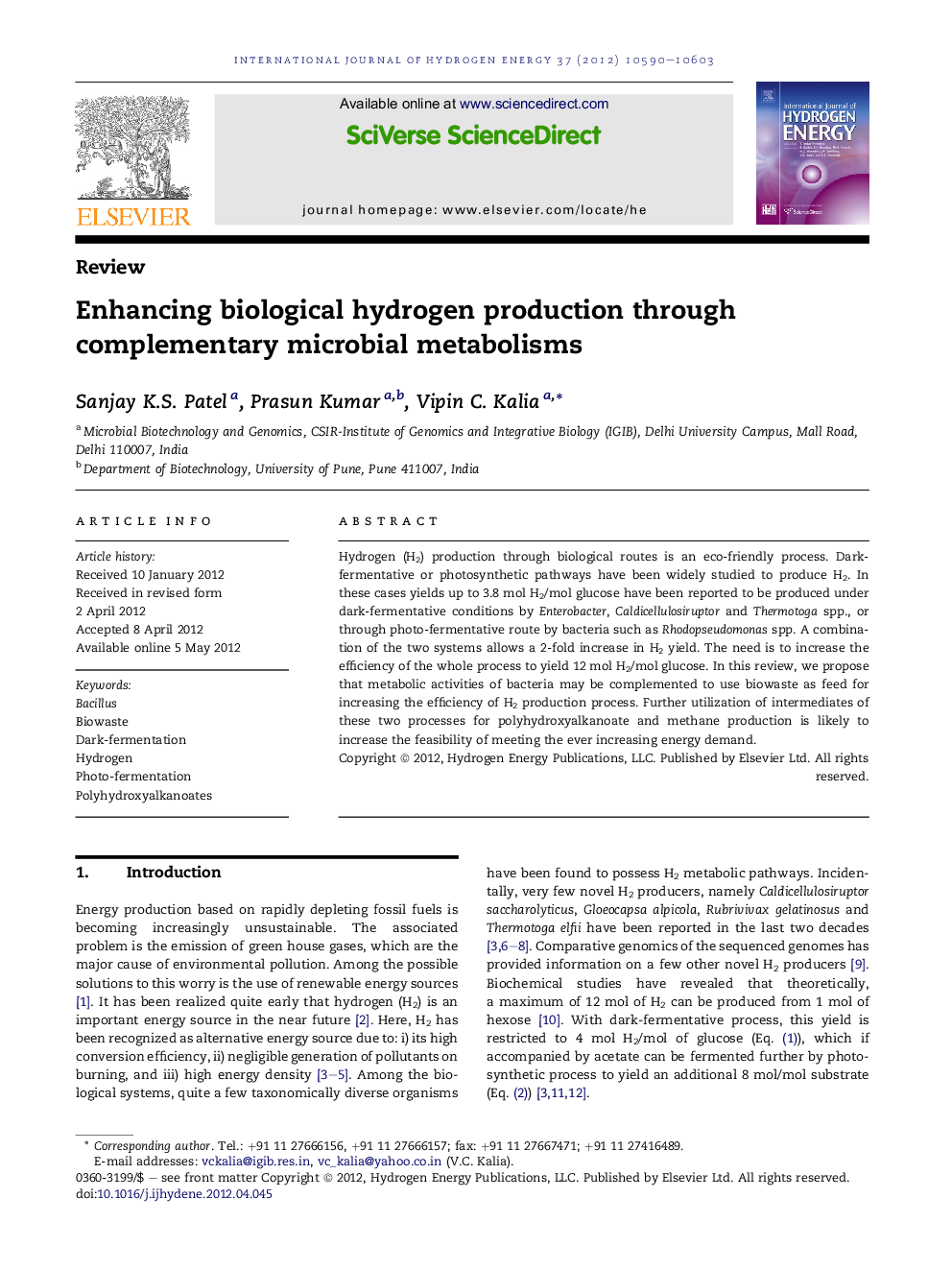| Article ID | Journal | Published Year | Pages | File Type |
|---|---|---|---|---|
| 1276339 | International Journal of Hydrogen Energy | 2012 | 14 Pages |
Hydrogen (H2) production through biological routes is an eco-friendly process. Dark-fermentative or photosynthetic pathways have been widely studied to produce H2. In these cases yields up to 3.8 mol H2/mol glucose have been reported to be produced under dark-fermentative conditions by Enterobacter, Caldicellulosiruptor and Thermotoga spp., or through photo-fermentative route by bacteria such as Rhodopseudomonas spp. A combination of the two systems allows a 2-fold increase in H2 yield. The need is to increase the efficiency of the whole process to yield 12 mol H2/mol glucose. In this review, we propose that metabolic activities of bacteria may be complemented to use biowaste as feed for increasing the efficiency of H2 production process. Further utilization of intermediates of these two processes for polyhydroxyalkanoate and methane production is likely to increase the feasibility of meeting the ever increasing energy demand.
► Photosynthetic or dark-fermentative bacteria alone produce 3.5–3.8 mol H2/mol hexose. ► Complementing metabolisms of both kind H2 producers enhances yield up to 2-fold. ► Production of H2, biopolymers by Bacillus and methane enhance process economics.
